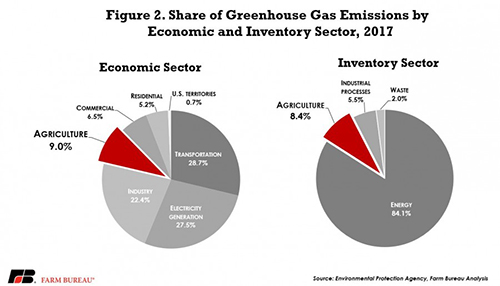News
March 6, 2019
Did you know?
Topic: Issues
Greenhouse Gas Emissions by Economic Sector
In February 2019 EPA released the annual Draft Inventory of U.S. Greenhouse Gas Emissions and Sinks report, revealing total greenhouse gas emissions in 2017 at 6.5 million metric tons in carbon dioxide equivalents, down 0.3 percent from 2016 levels and the lowest level in 25 years. When including land use, land-use changes and forestry, net greenhouse gas emissions totaled 5.8 million metric tons in carbon dioxide equivalents. The decline in greenhouse gas emissions was due to lower fossil fuel combustion, an ongoing shift from coal to natural gas and increased use of renewable fuels. Figure 1 highlights the trends in greenhouse gas emissions by economic sector.

The largest economic sector in greenhouse gas emissions was the transportation sector, representing 29 percent of all emissions. Emissions from the transportation sector totaled 1.86 million metric tons, up 0.5 percent from 2016 and the highest level in nine years. Following transportation was the energy sector, i.e., electric power, representing 28 percent of all emissions and totaling 1.8 million metric tons. Electric power emissions were down 4.2 percent from 2016 and the lowest level since the data was first recorded in 1990. Emissions from the industry sector represented 22 percent of all emissions and totaled 1.5 million metric tons, up 2.7 percent above prior-year levels.
Overall, emissions from the industry sector have declined in recent decades, down 11 percent since 1990, due to the shift in the U.S. economy from a manufacturing-based economy to a service-based economy. Other greenhouse gas emission sources, including commercial, residential and U.S. territories, totaled 798 million metric tons in 2017 and represented 12 percent of all emissions. These emissions were up slightly from 2017 due to higher greenhouse gas emissions from residential use.
Greenhouse gas emissions related to agriculture totaled 582 million metric tons in 2017, up slightly from prior-year levels, but down 2 percent from a decade ago. However, farmers and ranchers also contribute to carbon sequestration efforts, i.e., greenhouse gas removal, in the form of the management and preservation of grasslands, wetlands and forestry. During 2017, forest land management and land converted to forestry contributed to a 741-million-metric-ton reduction in greenhouse gas emissions, while wetland preservation reduced emissions by 4 million metric tons. When including total emissions and removals, total land use, land-use change and forestry represented a net emission reduction of 713 million metric tons.

In 2017, agriculture represented 9 percent of all emissions when measured by economic sector. When measured using the United Nations Framework Convention on Climate Change, an international standard, agriculture’s contribution to greenhouse gas emissions totaled 8.4 percent. Figure 2 highlights agriculture’s contribution to greenhouse gas emissions for 2017.
Read the rest of AFBF's Market Intel
